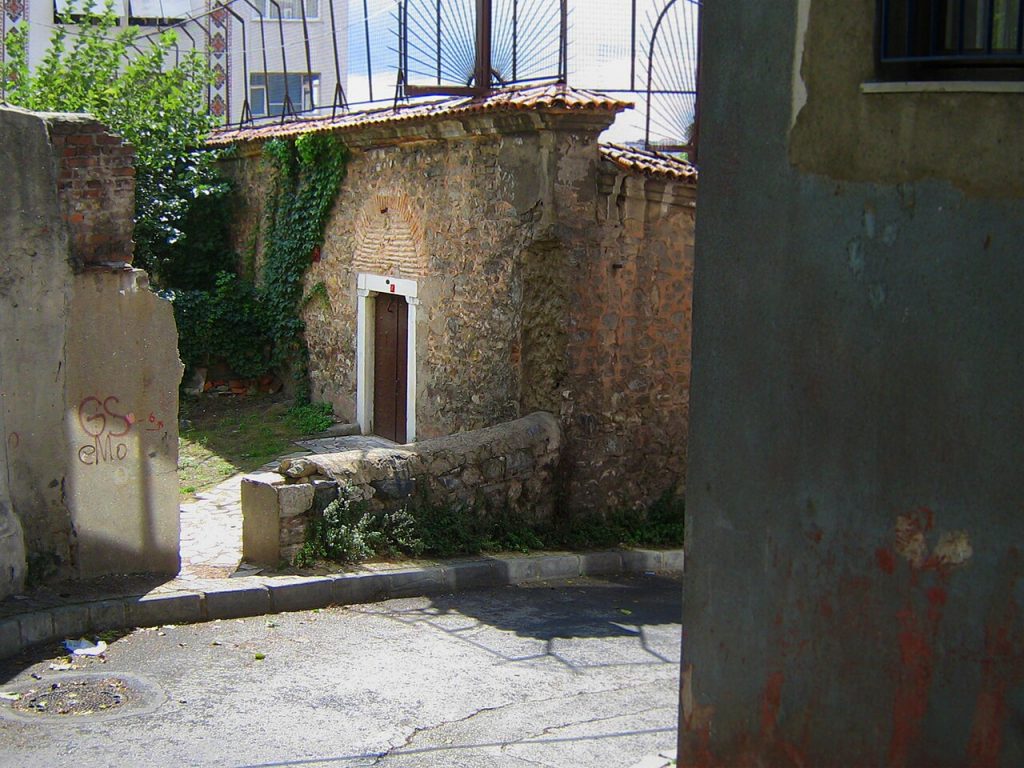Hasköy is the other Jewish suburb of Istanbul, located on the northern bank of the Golden Horn. When the Ottoman Empire was at its height in the sixteenth and seventeenth centuries, Hasköy was slightly more populous than Balat and contained a greater concentration of elite Jews.

One of the most famous inhabitants of the quarter, the prestigious physician from Granada Moshe Hamon, was an adviser to Sultan Mehmet II the Conqueror. Also in this quarter the first Jewish printing presses were set up. The most renowned educational and cultural institution of the period, the Gvira Yeshiva, established in the sixteenth century by Joseph Nasi is also located here. “There are more than a thousand homes surrounded by gardens in Hasköy, a beautiful spot with good air”, recalled Evliya Tchelebi, the famous Ottoman traveler and diarist of the seventeenth century who wrote about the 17,000 strong Jewish population -at the time the overwhelming majority in the quarter.

Soon after, the quarter began a period of decay, although the old traditions persisted. In 1858, Abraham de Camondo founded the institute that bears his name, the first Jewish school in the capital to teach according to western principles. The large school building of the Universal Israelite Alliance was opened in the same neighborhood in 1899. In 1955, the building became the administrative offices for the rabbinical seminary (which were later moved to Galata). Today it houses the main Jewish hospice for the elderly in Istanbul (at Köy Mektep Street). Urban reconstruction and the rerouting of major thoroughfares have devastated this neighborhood even more than that of Balat. Only two of the more than thirty synagogues in Hasköy remain.
The Maalem Synagogue was built in 1754. Recently restored after years of abandonment, this elegant building stands in a courtyard protected by a high wall. Two marble columns flank the porch, which opens onto a large, almost square hall with six pillars. The tevah stands in the middle of the room and has the form of a ship, like that of the Ahrida Synagogue. Beneath a small dome with floral decorations, is the aron, whose wooden doors have richly gilt moldings. Simpler and more restrained in the past with its light plastered wall contrasting with the darkness of the wooden pews, the hall interior today alternates between sky blue and white. The restorations have brought to life a part of the mural decorations.

Hasköy is home today to Istanbul’s main Karaite population. Their kenassa (synagogue), Bene Mikra , is a small wooden building behind a large brick wall. According to local tradition, a Karaite temple already existed on this spot in the Byzantine period. The current building, with its lovely portico flanked by two columns and a sculpted triangular pediment, was rebuilt in the eighteenth century after being devastated by fire. Access to the building is by way of a small staircase. Ilan Karmi notes that “As with all Karaite synagogues, this one is constructed below the ground level in order to respect the biblical passage that states, ‘From the depths, I call you, my God'”. Inside, prayer carpets replace the conventional pews for worshippers. The wooden houses surrounding the temple were formerly inhabited by Karaite families.
The Karaites
This dissident sect of Judaism is characterized essentially by its rejection of the oral law represented by the Talmud. Karaite Jews were living in Byzantium even before the Ottoman invasion, as the writings of the twelfth-century traveler Benjamin of Tudela attest. Of interest is his reference to a community of 500 Karaites in Galata, close to the Bosporus in the present-day Karaköy quarter. More than eighty Karaites communities existed in the territory of the Ottoman Empire, as well as in Syria, Egypt, the Balkans, and especially Crimea.
Going back hill to the north, you will arrive at Hasköy’s large Jewish cemetery, the largest in the city along with that of Kuzgunçuk, on the Asian side of the Bosporus. Half abandoned, the cemetery is today bisected by an urban thoroughfare. The road passes just at the foot of Abraham de Camondo’s tomb, a neo-Gothic mausoleum meant to recall for posterity the grandeur of this enterprising financier, who, although living in Paris, asked to be buried in Istanbul.